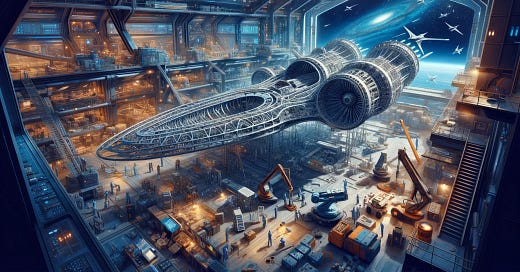The objective of this tutorial series is ambitious: to guide billionaires or their engineering spin doctors on how to create an entity capable of achieving extraordinary aerospace goals. This series will delve into the human aspect of such a venture, highlighting the delicate interactions between individuals with diverse backgrounds, united by a limitless vision and motivation.
The Vision
Creating a compelling vision is crucial. It needs to be profound and something with which one deeply identifies. This vision will occupy your thoughts for years to come, requiring ambition, a narrative, and aligned values. For instance, Elon Musk's vision for Mars fits into the historical narrative of exploration, embodying the next frontier beyond Earth's bounds. This vision encompasses not just the idea of a multi-planet civilization but also economic scenarios that make it viable, such as reducing the cost of space travel to make it as routine as air travel.
Musk's vision was not entirely new; it drew from science fiction and NASA projects from the 1960s and 70s. However, Musk revitalized it with societal and economic scenarios, making it feasible and exciting again. This approach demonstrates that a vision doesn't have to be novel but needs to be rich with open potentials and economically viable scenarios.
Developing a Unique Vision
For an "European SpaceX," it's essential to develop a distinct vision that combines ambition, societal goals, and the potential to create economic ecosystems. Replicating Musk's vision isn't feasible, as it already "belongs" to him and lacks a fresh narrative. The vision should inspire human presence in space, symbolizing motivation to solve the complexities of space engineering. Rational justifications for human presence in space are limited; the most compelling is the preservation of humanity, though Earth's preservation is paramount.
Exploration and scientific discoveries, while less justifiable on rational grounds, could form part of a broader vision. The discovery of intelligent life is purely hypothetical and doesn't offer a concrete vision. The multi-planet civilization concept, centered on Mars, is dominant due to its similarity to Earth and proximity. Outer planets and asteroids pose significant challenges, making them less attractive for human habitats.
Alternative Visions
Another potential vision involves the industrialization of space. This could involve relocating industries to the Moon, Mars, or asteroids, utilizing local materials and maintaining absolute control over the workforce, thus freeing industry from Earth's constraints. This vision has roots in the ideas of several industrial leaders and merits deeper exploration.
Ambitious goals like interstellar travel are motivating for enthusiasts but lack broader global stakes without extraterrestrial destinations. Additionally, developing an economic ecosystem around such missions is challenging.
The Importance of Diverse Perspectives
Developing a vision requires considering technical, economic, and societal aspects, which one person cannot address alone. It's crucial to surround oneself with the right team to foster necessary discussions and shape a personalized vision. The next article in this series will focus on the human element of the project.
Stay tuned for insights on building the right team and fostering the delicate interactions required to bring such an extraordinary aerospace vision to life.




